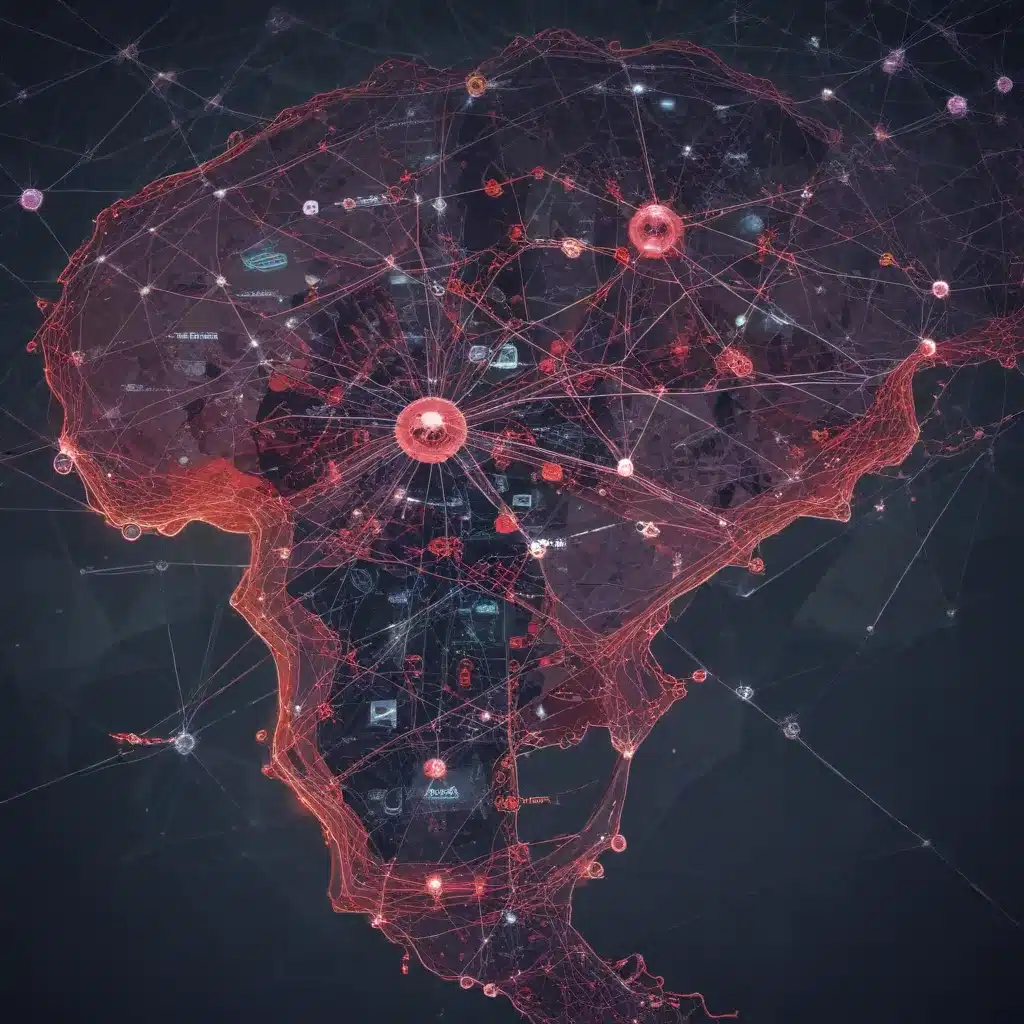
Unraveling the Intricate Tapestry of Cybercrime
In the digital age, the landscape of cybersecurity has become increasingly complex, with a growing web of malicious actors and evolving threats. As seasoned IT professionals, we must delve deep into the malware ecosystem to understand its intricate workings and devise effective strategies to combat the scourge of cybercrime.
The Shifting Landscape of Cybercrime
Cybercrime has become a pervasive and insidious threat, affecting individuals, businesses, and governments alike. The U.S. Government Accountability Office (GAO) has reported that cybercrimes in the United States have resulted in hundreds of billions of dollars in losses, jeopardizing public safety and economic security. From ransomware attacks that cripple school districts to data breaches that expose sensitive information, the impact of these crimes is far-reaching and devastating.
The very nature of cybercrimes makes them notoriously difficult to track and combat. Cybercriminals can operate anonymously, exploit the borderless nature of the internet, and leverage technology to conduct their illicit activities across state and international boundaries. This has created significant challenges for law enforcement agencies, which must often coordinate with counterparts in other countries to address these global threats.
Mapping the Ransomware Ecosystem
One of the most prevalent and dangerous forms of cybercrime is ransomware. In these attacks, malicious software is used to hijack computer systems, preventing their use and demanding a ransom payment in exchange for the restoration of access. The Ransomware Task Force has shed light on the complex web of actors and infrastructure that underpin the ransomware ecosystem.
The task force’s report, “Mapping the Ransomware Payment Ecosystem,” provides a comprehensive overview of the various components that enable ransomware attacks to thrive. This includes the distribution channels used by cybercriminals to spread their malware, the payment methods and financial infrastructure exploited to facilitate ransom payments, and the intricate network of money laundering schemes that conceal the illicit proceeds.
Addressing the Limitations of Cybercrime Tracking
One of the key challenges in combating cybercrime is the lack of a comprehensive and standardized approach to tracking and reporting these incidents. As the GAO report highlights, federal law enforcement agencies do not define cybercrime in a consistent manner, hindering their ability to share critical information and coordinate their efforts.
Moreover, the report notes that victims of cybercrime are often hesitant to come forward, either due to a lack of understanding of where to report the attacks or a desire to protect their reputation. This underreporting further obscures the true scale and impact of cybercrime, making it difficult for law enforcement to allocate resources and develop effective countermeasures.
To address these limitations, the National Cybersecurity Strategy outlines several key initiatives, including the development of shared language and categories for classifying cybercrime incidents. This standardization will enable more accurate data collection and reporting, ultimately providing law enforcement agencies with a clearer picture of the cybercrime landscape.
Strengthening Collaboration and Information Sharing
Effective collaboration and information sharing among various stakeholders, including government agencies, private sector organizations, and international partners, are crucial in the fight against cybercrime. The GAO report highlights the need for enhanced coordination, as the current limitations in data collection and sharing hinder the ability of law enforcement to combat these threats.
The National Cybersecurity Strategy emphasizes the importance of building a “whole-of-nation” approach to cybersecurity, where public and private entities work together to identify, prevent, and respond to cyber threats. This collaborative model is essential for disrupting the complex networks that enable cybercriminals to operate and for developing more effective countermeasures.
Harnessing the Power of Technology
As IT professionals, we must stay at the forefront of technological advancements to combat the evolving tactics of cybercriminals. This includes leveraging advanced analytics, machine learning, and artificial intelligence to detect and mitigate cyber threats in real-time. By harnessing the power of technology, we can proactively identify patterns, predict emerging threats, and automate the response to cyber incidents.
Additionally, the development of robust cybersecurity frameworks, such as the NIST Cybersecurity Framework, provides a comprehensive approach to managing cyber risks. These frameworks offer guidance on risk assessment, asset management, access control, and incident response, empowering organizations to build resilient defenses against a wide range of cyber threats.
Educating and Empowering Users
While technological solutions are crucial, the human element remains a critical component in the fight against cybercrime. By educating and empowering end-users, we can create a more vigilant and informed population that is better equipped to identify and respond to cyber threats.
This includes providing training on best practices for password management, phishing detection, and secure online behavior. Additionally, fostering a culture of cybersecurity awareness and proactive risk mitigation within organizations can significantly enhance their resilience against malware and other cyber attacks.
Conclusion: Navigating the Complexities of Cybercrime
The malware ecosystem is a complex and ever-evolving threat landscape that demands the collective efforts of IT professionals, law enforcement agencies, policymakers, and the broader public. By mapping the intricate web of cybercrime, leveraging technological advancements, and fostering collaborative partnerships, we can work towards a more secure and resilient digital landscape.
At IT Fix, we are committed to empowering our readers with the knowledge and tools necessary to navigate the complexities of cybersecurity. Through our in-depth analysis, practical tips, and industry insights, we strive to equip individuals and organizations with the resources they need to protect themselves and thrive in the face of emerging cyber threats.












